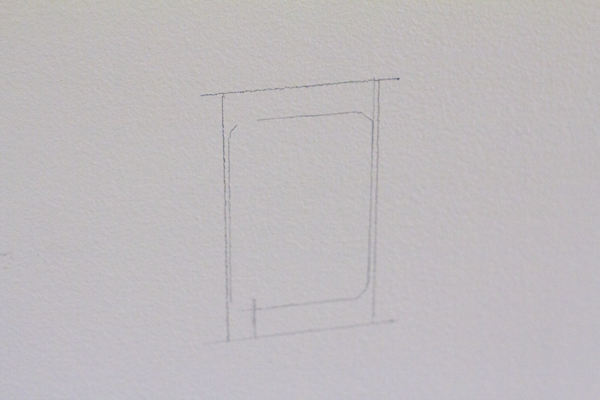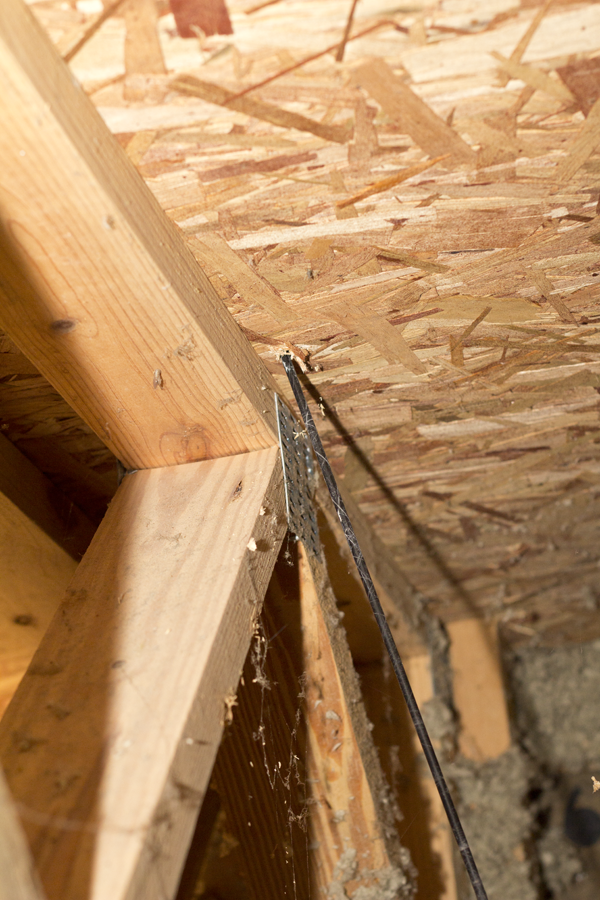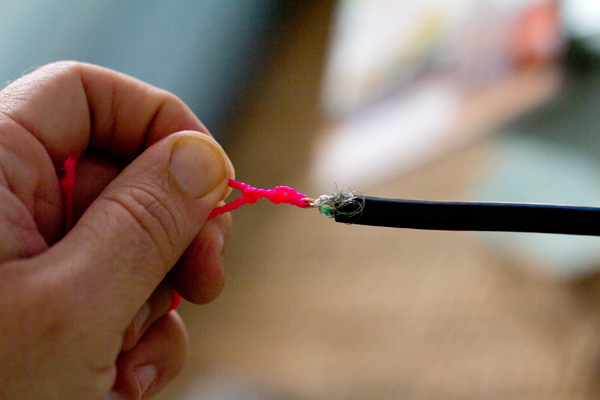DIY Cable Installation
It would seem that every time I’ve considered moving my TV to a new spot in the house, that there’s never a cable outlet where I need one. I recently remedied this issue and wanted to share with you how to tackle your own DIY Cable Installation!
This tutorial is specific to installing “through the wall” cable lines in houses with a crawl space. Since many cable customers have HD receivers, I think it’s important to install a home run aka an uninterrupted run of cable. Doing so will result in a higher signal and better quality picture. With that being said, let’s take a look at what you’ll need.
Materials List
(I’ve included affiliate links for your convenience. I earn a small percentage from a purchase using these links. There is no additional cost to you. You can read more about affiliate links here.)
- Low Voltage Electrical Box
- Keyhole Saw
- RG6 Cable
- 3/8″ x 54″ Auger Drill Bit
- 3/8″ x 12″ Drill Bit
- Drill
- Cable Clips
- Hammer
- Coax Cable Receptacle Wall Plate
- Coax Cable Stripper
- Compression Tool w/ F-Connectors
- Pencil
- String
- Fish Pole or Straightened Coat Hanger
Instructions for Installing Your Own Cable Outlet:
When you’ve decided where to install the new cable outlet, measure up 15″ and mark an area 1-1/2″ x 3-3/4″ .
Using a keyhole saw, cut through the drywall to create the opening for the installation of a low voltage electrical box.
Before you complete the next step, make sure that the area you plan on drilling into, doesn’t contain any hazards (i.e. electrical cable, duct work, gas lines, etc.) With open access into the wall, place the tip of the auger bit into the cutout and drill into the bottom of the stud wall to gain access into the crawlspace below.
Leave the auger bit in place and head down to the crawl space. This will make it easy to spot where you’ll be installing the cable. Once in place, tie one end of the cable line onto the tip of the drill bit using utility string, then head back inside.
Slowly pull the drill bit along with the tied on cable line back up through the opening. Then slide the low voltage box into the opening in the drywall and secure it in place.
Before you can finish this end of the installation, you’ll need to add an F-connector to the end of the cable. Here’s a quick reference guide on how to use a compression tool to attach F-connectors to coax cable.
Now, screw the F-connector onto the back of the coax cable receptacle wall plate and secure the wall plate onto the low voltage electrical box.
The inside work is done for the time being. Now you’ll need to head outside to where your cable box is located. Depending on how your home is constructed, and where you cable lines are run, this next step may be different for you.
Using a 12″ masonry bit, drill through the concrete block.
Once you’re through the block, slide a fish pole or a straightened coat hanger through the hole.
Now head back into the crawlspace. With one end of your cable line installed, you can secure the remaining run of cable to the floor joists using cable clips as you work your way toward the opening you just made, closest to the cable box.
When you reach the drilled opening, attach a small section of string to the end of the fish pole.
Then tie the other end of the string to your cable line. Once it’s secure, head back and pull your line out.
Before you can finish the installation, you’ll need to add an F-connector to this end of the cable following the same instructions as you used inside.
Anytime I run a new cable line, I mark it using a paint marker, so that if something ever arises and I need to disconnect my lines, I can make certain that the correct cables get reconnected.
And as the final step, connect your newly run cable line to an open connector on the cable company’s cable splitter.

Before I began tackling my DIY cable installation, I looked into how much it would cost to have a professional installer come out and run my cable lines through the wall. To run a 50′ section of RG6 from the outer cable box to wall inside, it would have cost me a minimum of $125. Between Lowe’s and Amazon.com, I was able to get all of the materials I needed for $85. So not only did I save money by installing the cable line myself, but now if I want to run anything else through a wall, I own the tools to DIY it!
So the next time you’re rearranging a room and find that you’re without a cable outlet in a optimal spot, no need to fret! Tackle your own DIY cable installation!

















He walks approximately greet you so you offer a firm handshake and exchange small talk
casually when you type in the restaurant. You have painstakingly completed your
application form, delivered a properly prepared interview and
you are awaiting that “your hired” phone call.
The No Book DR-TA might be conducted in a variety of ways–whole class,
small group, or perhaps a blend of the two.
Myl buried cable inch in diameter and I can come up thtu the bottom it will have a cap on the raw end. How do I secure it at the bottom to keep it from sliding back out in the crawl space?
Better way that’s professional. I’ve installed solar permitted solar in central cali myself. Learn how to use emt and get a 1/2 inch and 3/4 inch bender. You can run it anywhere and it’s cheap, can use junction boxes for wire splices or Ts. It looks so pro and you don’t have to worry about some ahole cutting the wires or the wire isolation getting damaged. Using the correct wire is easy too. there’s USE-2 for runs outdoor unprotected and check your ground rods for damage, make runs using armored #6 to those. Doing things professionally is just a matter of knowing what to ask for at a distributor. I used to be like this, run things all ghetto when I was younger, but the right way really costs no more and in the long run, saves money, headache.
A d.i.y. and a tutorial at the same time… Yes please!!
Great blog!Thanks for embedding the pictures.The person is doing the work with the knack of an expert home electrician.Lots of information…Even a simple idea of cable installation becomes hectic without the help of the experts.This blog is surely gonna make our work much easier!
This is such valuable information Brittany. Thanks for this posting this.
This is great to know. I hate that some of my decorating decisions are limited to where cable connectors are. It seems ridiculous that they would rule us like that.
Thank you!